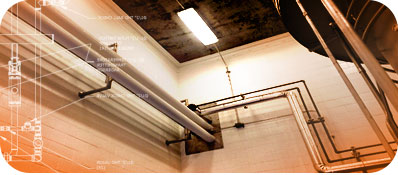
Flexibility in systems and processes allows a food company to meet consumers’ increasing demands for variety while working within the company’s strategic plan.
“The drive for flexibility in food processing can be attributed primarily to a couple of related factors: increased specification demands from large retail customers and consumer appetite for greater variety. Flexibility has become more commonplace in the last 20 years,” wrote David Phillips for Food Processing magazine.
When designing a food processing plant, best practices for food safety include floors walls and ceilings that can be easily cleaned, as well as plumbing systems that allow adequate water supply throughout the facility and proper drainage, according to Kenneth Fry, PE, LEED.
“Inadequate or improper design of food processing equipment is the leading cause of food safety problems,” writes Gerry Gomolka for Refrigerated and Frozen Foods. “It’s best to design or engineer the equipment with stringent, upfront specifications that meet your facility’s specific food safety requirements rather than trying to correct problems on the back end.”
The current marketplace and consumer demand also mean that energy efficiency and sustainability are playing a central role in plant design, as highlighted in this Food Engineering article.
“U.S. food processors face increasing energy-efficiency and sustainability demands from regulators, market competition and consumers interested in purchasing products from environmentally friendly companies. In addition, the costs of electricity and natural gas are rising, making energy-efficiency improvements an important focus in the industry,” wrote Jeffrey Yoders in the article, which goes on to discuss the benefits of an integrated design-build approach in achieving company goals, including energy-efficiency.

